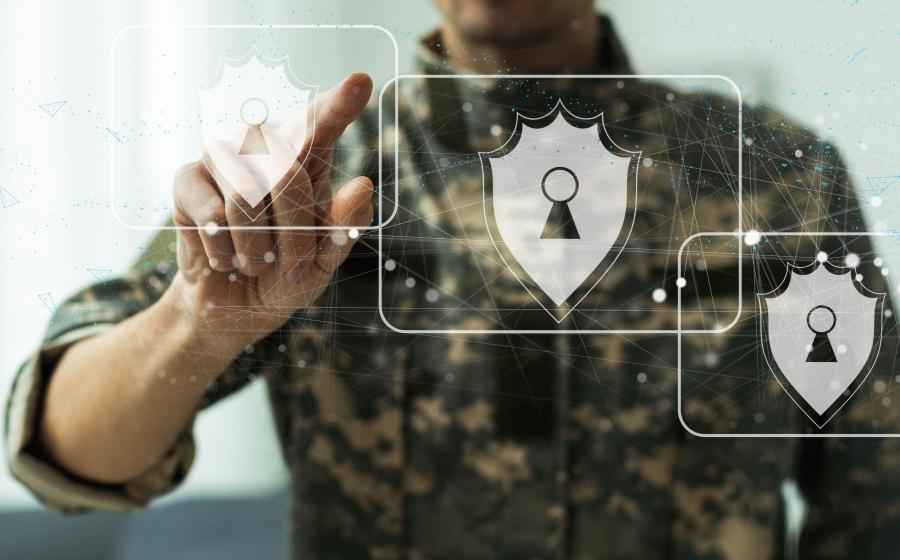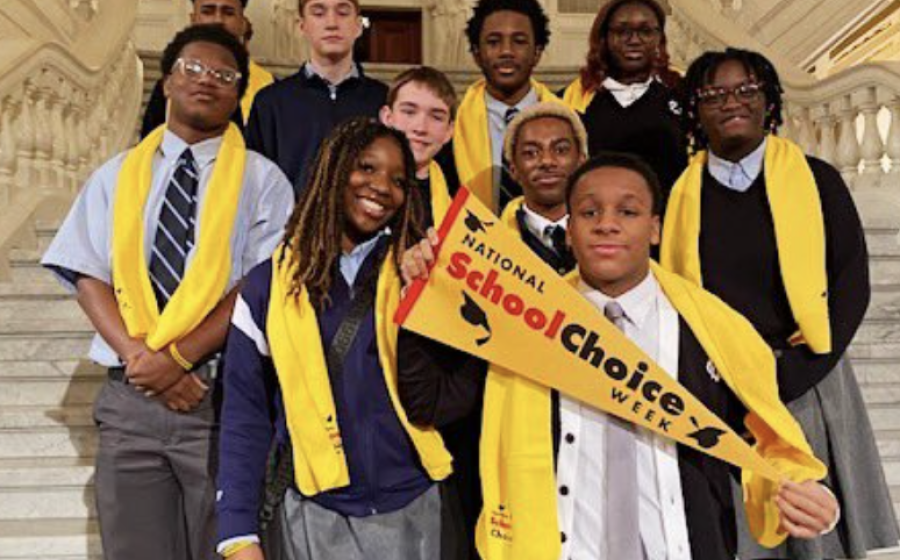The Rise of Microschooling and Educational Innovation in America
(NewsUSA) - Every child has potential, and all children deserve the opportunity to learn, thrive, succeed, and pursue their dreams. However, following the COVID-19 pandemic, America’s students are struggling. Half of all K–12 students are a full grade behind academically. Furthermore, 42% of low-income eighth graders lack basic reading skills and 54% lack basic math skills.
- Every child has potential, and all children deserve the opportunity to learn, thrive, succeed, and pursue their dreams. However, following the COVID-19 pandemic, America’s students are struggling. Half of all K–12 students are a full grade behind academically. Furthermore, 42% of low-income eighth graders lack basic reading skills and 54% lack basic math skills.
Moms and dads want a more responsive K–12 education system and the freedom to choose how and where their children learn. Over the past year, these parents have mobilized, spoken up, and demanded change. Their efforts compelled lawmakers to listen, leading to increased public and private school choice options across 20 states in 2023.
More American families now have unparalleled opportunities to send their children to different public, charter, magnet, online, and private schools or educate them at home. Cue the rise of microschooling. These innovative learning environments are small and often theme-based, providing a more personalized educational experience. And their popularity is growing.
According to EdChoice, over 39% of school parents nationwide either already have a child enrolled in microschooling or are keen on learning more about its potential.
These schools are both unique and diverse. For example, Black Mothers Forum Microschools, a growing network of microschools in Arizona, aims to dismantle the school-to-prison pipeline and replace it with a “school-to-purpose pipeline” through a culturally nuanced and inclusive approach.
Another example is the Prism Microschool in North Newton, Kansas. It offers a distinctive educational experience centered on tailoring each child’s education to their individual needs to nurture creativity and academic growth.
Across the nation, microschools like these are gaining traction. Organizations such as the Vela Education Fund, the National Microschooling Center, and the Yass Prize have been instrumental in shining a spotlight on these alternative models, ensuring that they flourish and grow. National School Choice Week (NSCW), hosted by the National School Choice Awareness Foundation (NSCAF), will showcase the full range of nontraditional models, including microschools, later this month.
Now is the time for both parents and state leaders to look to the future. Parents, I urge you to explore these new educational frontiers. If the traditional school setting doesn’t suit your child, microschooling, or any other nontraditional model, might offer the tailored, engaging experience they need.
As we all collectively look to the future, let’s embrace the potential of innovative educational models. By doing so, we aren’t just changing schools; we’re transforming lives and laying the foundation for future generations—one child at a time.
Andrew Campanella is president and CEO of the National School Choice Awareness Foundation the 501(c)(3) nonprofit organization that hosts National School Choice Week each Januaryand the author of The School Choice Roadmap: 7 Steps to Finding the Right School for Your Child.
Every child has potential, and all children deserve the opportunity to learn, thrive, succeed, and pursue their dreams. However, following the COVID-19 pandemic, America’s students are struggling. Half of all K–12 students are a full grade behind academically. Furthermore, 42% of low-income eighth graders lack basic reading skills and 54% lack basic math skills.
Moms and dads want a more responsive K–12 education system and the freedom to choose how and where their children learn. Over the past year, these parents have mobilized, spoken up, and demanded change. Their efforts compelled lawmakers to listen, leading to increased public and private school choice options across 20 states in 2023.
More American families now have unparalleled opportunities to send their children to different public, charter, magnet, online, and private schools or educate them at home. Cue the rise of microschooling. These innovative learning environments are small and often theme-based, providing a more personalized educational experience. And their popularity is growing.
According to EdChoice, over 39% of school parents nationwide either already have a child enrolled in microschooling or are keen on learning more about its potential.
These schools are both unique and diverse. For example, Black Mothers Forum Microschools, a growing network of microschools in Arizona, aims to dismantle the school-to-prison pipeline and replace it with a “school-to-purpose pipeline” through a culturally nuanced and inclusive approach.
Another example is the Prism Microschool in North Newton, Kansas. It offers a distinctive educational experience centered on tailoring each child’s education to their individual needs to nurture creativity and academic growth.
Across the nation, microschools like these are gaining traction. Organizations such as the Vela Education Fund, the National Microschooling Center, and the Yass Prize have been instrumental in shining a spotlight on these alternative models, ensuring that they flourish and grow. National School Choice Week (NSCW), hosted by the National School Choice Awareness Foundation (NSCAF), will showcase the full range of nontraditional models, including microschools, later this month.
Now is the time for both parents and state leaders to look to the future. Parents, I urge you to explore these new educational frontiers. If the traditional school setting doesn’t suit your child, microschooling, or any other nontraditional model, might offer the tailored, engaging experience they need.
As we all collectively look to the future, let’s embrace the potential of innovative educational models. By doing so, we aren’t just changing schools; we’re transforming lives and laying the foundation for future generations—one child at a time.
Andrew Campanella is president and CEO of the National School Choice Awareness Foundation the 501(c)(3) nonprofit organization that hosts National School Choice Week each January and the author of The School Choice Roadmap: 7 Steps to Finding the Right School for Your Child.



 - Think of it as “Sex and the City” with a new twist: from HIS point of view!
- Think of it as “Sex and the City” with a new twist: from HIS point of view!
 - Advances in generative artificial intelligence (GenAI), offer the United States government a unique opportunity to accelerate two key defense goals of preparing for the future character of conflict and strengthening our military overmatch against our international rivals, according to experts at the
- Advances in generative artificial intelligence (GenAI), offer the United States government a unique opportunity to accelerate two key defense goals of preparing for the future character of conflict and strengthening our military overmatch against our international rivals, according to experts at the 
 - Over the last thirty years, the efforts of parents, educators, and state leaders have laid the foundation for a pluralistic sea change in how we think about the education options available to families in the U.S. But over the last four, things went from incremental to warp speed. In 2023, 20 states added or expanded school choice programs, which, in sum, affected the largest group of eligible families in a single year, ever.
- Over the last thirty years, the efforts of parents, educators, and state leaders have laid the foundation for a pluralistic sea change in how we think about the education options available to families in the U.S. But over the last four, things went from incremental to warp speed. In 2023, 20 states added or expanded school choice programs, which, in sum, affected the largest group of eligible families in a single year, ever.
 - Thought you weren’t eligible to give blood? Updated guidance is making it possible for more people to donate than ever.
- Thought you weren’t eligible to give blood? Updated guidance is making it possible for more people to donate than ever.
 - Intel’s Meteor Lake introduced A.I. chips that brought in a new type of A.I. power dedicated specifically to A.I. processing, the Neural Processing UnA.I. It was designed to work similarly to the human brain, with many nerve cells and synapses to transmit and receive signals. The end result is a processor that outperforms any CPU or GPU. Rolling out to laptops before desktops or mobile platforms, Intel looks to bring A.I. directly onto consumers’ PCs, giving end users better privacy, lower latency, and bypassing the need to pay for third-party services.
- Intel’s Meteor Lake introduced A.I. chips that brought in a new type of A.I. power dedicated specifically to A.I. processing, the Neural Processing UnA.I. It was designed to work similarly to the human brain, with many nerve cells and synapses to transmit and receive signals. The end result is a processor that outperforms any CPU or GPU. Rolling out to laptops before desktops or mobile platforms, Intel looks to bring A.I. directly onto consumers’ PCs, giving end users better privacy, lower latency, and bypassing the need to pay for third-party services.


